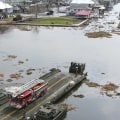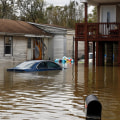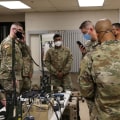The purpose of the Emergency Response Plan is to establish policies and procedures and an organizational hierarchy for responding to emergencies that occur on campus. An official website of the United States government Official websites use. Government A. The gov website belongs to an official government organization in the United States.
The first step in developing an emergency response plan is to conduct a risk assessment to identify possible emergency scenarios. Understanding what can happen will allow you to determine resource requirements and develop plans and procedures to prepare your business. The emergency plan must be consistent with its performance objectives. At a minimum, each facility must develop and implement an emergency plan to protect employees, visitors, contractors, and anyone else at the facility. This part of the emergency plan is called “protective measures for the safety of life” and includes evacuating buildings (“fire drills”), protecting yourself from inclement weather, such as tornados, “taking refuge in place” from an external hazard carried by the air, such as the release of chemicals and confinement.
Confinement is an action to protect against an act of violence. When an emergency occurs, the first priority is always the safety of life. The second priority is the stabilization of the incident. There are many steps that can be taken to stabilize an incident and minimize potential damage. First aid and CPR performed by trained employees can save lives.
Using fire extinguishers by trained employees can extinguish a small fire. Containing a small chemical spill and monitoring public services and building systems can minimize damage to a building and help prevent environmental damage. Some extreme weather events can be predicted hours before they arrive, providing valuable time to protect a facility. You must establish a plan and have resources available or available quickly to prepare for an installation. The plan should also include a process for assessing damage, salvaging, protecting intact property, and cleaning up after an incident.
These actions to minimize additional damage and business interruption are examples of property conservation. In this step you can find a guide for developing an emergency response plan. When there is a hazard inside a building, such as a fire or chemical spill, the occupants of the building must be evacuated or relocated to a safe place. Other incidents, such as a bomb threat or the receipt of a suspicious package, may also require evacuation. If a tornado warning is issued, everyone should be moved to the strongest part of the building and away from the outside glass. If a transportation accident on a nearby road causes the release of a chemical cloud, the fire department may warn that you should “take refuge in place”.
To protect employees from an act of violence, the message “confinement” must be transmitted and everyone must hide or protect themselves from the aggressor. Your emergency plan should include these protective measures. If you are a tenant of a multi-tenant building, coordinate planning with the building manager. The immediate evacuation of employees requires an alert system that can be heard throughout the building. Test your fire alarm system to determine if all employees can hear it.
If there is no fire alarm system, use a PA system, speakers, or other means to warn everyone to evacuate. Sound the evacuation signal during planned drills so that employees become familiar with the sound. Appoint an evacuation team leader and assign employees the task of leading the evacuation of the building. Assign at least one person to each floor to act as a “floor keeper” and direct employees to the nearest safe exit. Assign a replacement if the floor keeper is not available or if the floor size is too large.
Ask employees if they would need special help evacuating or moving to a shelter. Assign a “friend” or assistant to help people with disabilities during an emergency. Contact the fire department to develop a plan to evacuate people with disabilities. Keep a list of employees and keep a record of visits to the front desk, reception area, or main office area. Assign someone to bring the lists to the meeting area when the building is evacuated. Use the lists to account for everyone and let the fire department know if everyone has been counted.
When employees are evacuated from a building, OSHA regulations require accounting to ensure that everyone has left safely. A fire, chemical spill, or other hazard can block an exit, so make sure the evacuation team can direct employees to an alternative safe way out. If a tornado warning is issued, a different warning signal should sound and everyone should move to a shelter in the strongest part of the building. Shelters can include basements or interior rooms with reinforced masonry construction. Evaluate potential shelters and perform a drill to see if the shelter space can accommodate all employees.
Since there may be little time to shelter when a tornado approaches, it's important to give advance notice. If there is a strong thunderstorm, monitor news sources in case a tornado warning is issued. Consider buying a radio with an emergency alert system, available at many electronics stores. Tune in to weather warnings broadcast by local radio and television stations. Sign up for free text and email alerts, which are available on multiple news and weather resources on the Internet. A tanker truck crashes on a nearby road, releasing a chemical cloud; A large column of black smoke rises into the air due to a fire at a nearby manufacturing plant; If, as part of this event, an explosion or an act of terrorism has occurred, public emergency officials can order people nearby to “take refuge in place”; You must develop an on-site shelter plan; The plan should include a means of warning everyone to move away from windows and towards center of building; Warn anyone working outside enter building immediately; Move everyone second upper floors multi-story building; Close outside doors windows.






